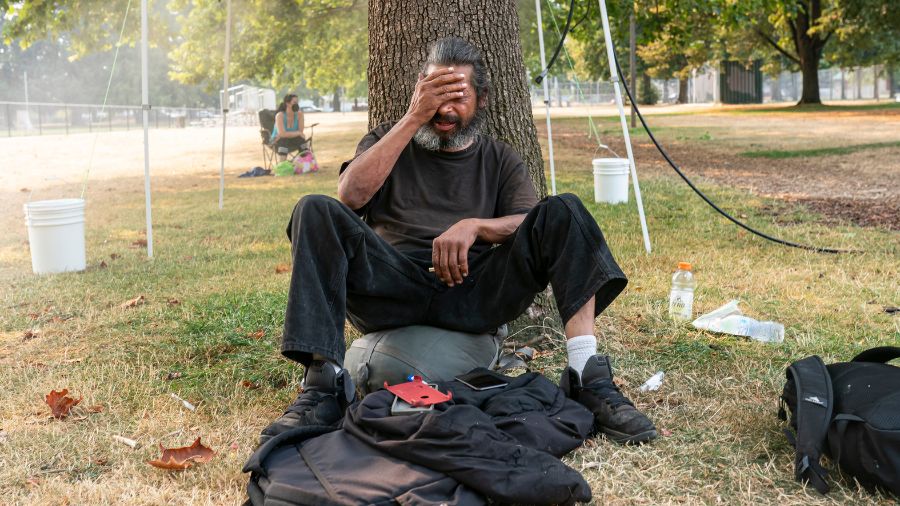A Scene That Should Stop Us Cold
On Sunday, a man died on a Portland sidewalk. He was slumped against the pavement, a piece of tinfoil in one hand and a small baggie in the other. His eyes were closed. His body sat there for hours as hundreds of people passed by. Most never looked down.
Independent journalist Kevin Dahlgren eventually stopped, checked for a pulse, and called 911. He waited an hour for someone to arrive. For him, it was the hundredth body he has encountered this year. For Portland, it was another tragic marker in a crisis that has left many too numb to respond.
This is where we are.
Also Read
Numbness as a Survival Strategy
We have trained ourselves not to see. We walk past needles, tents, and human wreckage as if they are fixtures of city life. The alternative — truly confronting what’s happening — feels unbearable. So we keep moving, heads down, telling ourselves there’s nothing we can do.
That numbness is understandable. The homelessness crisis has overwhelmed our cities. It is both maddening and heartbreaking, and the sheer scale has left residents exhausted and angry. But acceptance comes at a cost. When we stop noticing, we stop caring.
Visible and Invisible Homelessness
It is important to name what we are actually dealing with. There are two very different crises, both devastating, but requiring different solutions.
-
Visible homelessness: The tents on sidewalks, the men and women screaming at unseen demons, those collapsed in doorways with drug paraphernalia. This population struggles with severe addiction, untreated mental illness, or both. Housing alone cannot save them. They need mandatory treatment, long-term recovery programs, and intensive mental health care. Giving someone four walls without addressing the underlying disease isn’t compassion — it’s abandonment with a roof.
-
Invisible homelessness: Families sleeping in cars, workers in shelters, people forced out of apartments by medical bills, job loss, or skyrocketing rents. They are not battling psychosis or fentanyl; they are victims of an unforgiving economy. Their path forward requires affordable housing, living wages, and social safety nets.
To conflate the two is to miss the reality on our streets. The man who died Sunday? He needed intervention years before he ended up poisoned and alone on a sidewalk.
Remembering Humanity
We cannot forget: each person in crisis is someone’s child. They had names, stories, people who once loved them. They had dreams before trauma, addiction, or illness unraveled their lives.
That man on the Portland sidewalk wasn’t “street furniture.” He was a human being who deserved better. He deserved care, treatment, and dignity long before his final moments became another sad statistic in a city that is learning to step over bodies.
Demanding accountability, enforcement, and treatment does not erase compassion. We can insist on mandatory recovery programs and still acknowledge the humanity of those lost in addiction.
When Horror Becomes Routine
The greater danger is not only in what is happening to them, but in what is happening to us. When we step over bodies without stopping, when we no longer flinch at the sight of overdose or death in public, we are losing something vital in ourselves.
We are normalizing horror.
Refusing to Accept This as Normal
A man died with poison in both hands while life in the city marched on. That should not be routine. It should shock us, force us to act, and demand that we do better.
We deserve cities where people get help before they collapse in public. Where addiction is treated, not ignored. Where compassion doesn’t mean enabling, but intervening.
The solutions will be complex and contested. But the first step is simple: we must see them. We must refuse to look away.
Because this is not normal. It is a tragedy unfolding in slow motion on our sidewalks. And if we keep walking past it, the failure will not just be theirs. It will be ours.












